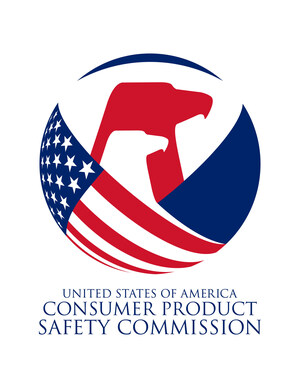WASHINGTON, Oct. 30, 2014 /PRNewswire-USNewswire/ -- Fall is a good time of year to think about fire and carbon monoxide safety in your home. The U.S. Consumer Product Safety Commission (CPSC) urges consumers to change the batteries in their smoke and carbon monoxide (CO) alarms this weekend. Daylight Saving Time ends on Sunday, November 2, and that's when consumers will turn their clocks back one hour.
"Smoke and CO alarms can save lives, but only if you have working alarms," said CPSC Chairman Elliot F. Kaye. "Make it a tradition, that when you change your clocks for Daylight Saving Time, that you also change your smoke and CO alarm batteries. Working alarms--on every level of your home--can buy your family valuable time to escape from a fire or dangerous level of carbon monoxide."
According to the National Fire Protection Association (NFPA), approximately three out of five fire deaths occur in homes with no smoke alarms or homes without working smoke alarms.
Home fires often result in lost lives, lasting injuries and property damage. CPSC estimates that between 2009 and 2011, an average of 362,300 unintentional residential fires attended by the fire service, resulted in 2,260 deaths, 12,820 injuries and nearly $7 billion in property damage each year.
Batteries should be replaced in smoke alarms at least once a year, unless the alarms have sealed, 10-year batteries. CPSC recommends that consumers test their smoke alarms every month to make sure that the alarms are working properly. Smoke alarms should be placed on every level of the home, inside each bedroom, and outside sleeping areas.
Carbon monoxide alarms are also critically important safety equipment in the home. Each year from 2008 to 2010, there were an average 162 reported carbon monoxide deaths involving consumer products under CPSC's jurisdiction, including portable generators and home heating systems.
Carbon monoxide is called the invisible killer. You cannot see or smell CO. This poisonous gas can come from a variety of sources and can quickly incapacitate and kill its victims.
Carbon monoxide alarms should be installed on every level of the home and outside sleeping areas. Carbon monoxide alarms need fresh batteries at least once every year, unless they are powered by sealed, 10-year batteries. Carbon monoxide alarms should be tested once a month to make sure they are working properly.
The U.S. Consumer Product Safety Commission is charged with protecting the public from unreasonable risks of injury or death associated with the use of thousands of types of consumer products under the agency's jurisdiction. Deaths, injuries, and property damage from consumer product incidents cost the nation more than $1 trillion annually. CPSC is committed to protecting consumers and families from products that pose a fire, electrical, chemical or mechanical hazard. CPSC's work to ensure the safety of consumer products - such as toys, cribs, power tools, cigarette lighters and household chemicals – contributed to a decline in the rate of deaths and injuries associated with consumer products over the past 40 years.
Federal law bars any person from selling products subject to a publicly-announced voluntary recall by a manufacturer or a mandatory recall ordered by the Commission.
To report a dangerous product or a product-related injury go online to www.SaferProducts.gov or call CPSC's Hotline at (800) 638-2772 or teletypewriter at (301) 595-7054 for the hearing impaired. Consumers can obtain news release and recall information at www.cpsc.gov, on Twitter @USCPSC or by subscribing to CPSC's free e-mail newsletters.
Media Contact
Please use the phone numbers below for all media requests.
Phone: (301) 504-7908
Spanish: (301) 504-7800
Logo - http://photos.prnewswire.com/prnh/20030904/USCSCLOGO
SOURCE U.S. Consumer Product Safety Commission
Related Links
WANT YOUR COMPANY'S NEWS FEATURED ON PRNEWSWIRE.COM?
Newsrooms &
Influencers
Digital Media
Outlets
Journalists
Opted In





Share this article